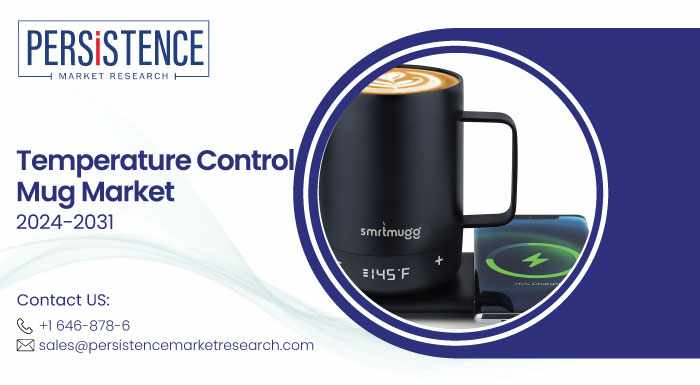
The hydrocolloid market is experiencing significant growth, driven by the expanding range of applications across multiple industries. Hydrocolloids, water-soluble polysaccharides, are used to form gels, thicken liquids, and stabilize emulsions. These versatile ingredients are essential in food and beverage, pharmaceuticals, cosmetics, and other industries, where they play crucial roles in improving texture, stability, and functionality.
Read More: https://www.persistencemarketresearch.com/market-research/hydrocolloid-market.asp
As consumer demands evolve and new technological innovations emerge, the hydrocolloid market is becoming an increasingly integral part of everyday products. In this blog post, we explore the factors contributing to the rapid growth of the hydrocolloid market and how expanding applications are driving its success.
1. Rising Demand in the Food and Beverage Industry
The food and beverage sector remains one of the largest consumers of hydrocolloids, accounting for a substantial portion of the market share. Hydrocolloids are used in a wide range of applications, including as gelling agents, thickeners, stabilizers, and emulsifiers. Their ability to improve the texture, consistency, and shelf-life of products makes them invaluable in food processing.
With growing consumer preferences for healthier, more natural food options, hydrocolloids derived from plant-based and clean-label sources are gaining significant traction. These ingredients are particularly popular in the production of dairy alternatives, gluten-free foods, low-sugar products, and ready-to-eat meals, where they help maintain desired textures and stability.
Impact on the Market:
Plant-Based Foods: The increasing popularity of plant-based and vegan diets is pushing demand for hydrocolloids in dairy-free and meat-free products.
Natural and Clean-Label Ingredients: Consumers are increasingly looking for natural ingredients, and hydrocolloids from sustainable sources like agar, guar gum, and pectin are becoming key components in clean-label formulations.
2. Expanding Role in the Pharmaceutical Industry
The pharmaceutical industry is another significant driver of the hydrocolloid market. Hydrocolloids are essential in various pharmaceutical applications, including drug delivery systems, wound care, and as excipients in tablets and capsules. Their ability to form gels and enhance the stability of active ingredients makes them ideal for use in controlled-release drug formulations.
With the growing demand for targeted therapies, particularly in the realm of chronic disease management, hydrocolloids are being leveraged to create more effective drug delivery systems. These include slow-release tablets, transdermal patches, and even medical dressings for wound healing, where hydrocolloids provide moisture retention and accelerate healing.
Impact on the Market:
Drug Delivery: Hydrocolloids are essential in creating efficient drug delivery systems that improve the bioavailability of active compounds.
Wound Care and Medical Applications: In wound care, hydrocolloids are used in dressings that promote healing by creating a moist environment conducive to tissue repair.
3. Technological Advancements and Innovation
As technology continues to evolve, the hydrocolloid market is benefitting from innovations in extraction methods, product formulations, and applications. Advances in biotechnology and green extraction techniques have made it possible to obtain hydrocolloids with minimal processing, reducing production costs and environmental impact.
Additionally, new hydrocolloid formulations are being developed that combine the properties of different agents to enhance their functionality. These innovations are expanding the potential applications of hydrocolloids in fields such as food processing, cosmetics, and bioplastics.
Impact on the Market:
Efficient Extraction: New extraction techniques are making hydrocolloid production more sustainable and cost-effective, driving greater adoption.
Innovative Formulations: The development of multi-functional hydrocolloids has expanded their use in a variety of new applications, opening up untapped markets.
4. Sustainability and Eco-Friendly Alternatives
Sustainability has become a major focus across industries, and hydrocolloids are well-positioned to benefit from this trend. Many hydrocolloids are derived from renewable, plant-based sources, making them a more sustainable option compared to synthetic alternatives. The growing concern over plastic pollution has also led to the use of hydrocolloids in biodegradable packaging solutions, which are gaining popularity in food packaging and other consumer goods.
In addition, hydrocolloids' role in improving the shelf life of food products contributes to reducing food waste, further enhancing their sustainability credentials. Their natural, biodegradable properties make them an attractive choice for eco-conscious consumers and manufacturers looking to reduce their environmental footprint.
Impact on the Market:
Eco-Friendly Packaging: Hydrocolloids are being increasingly used in biodegradable packaging solutions, aligning with the demand for sustainable products.
Reducing Waste: By extending the shelf life of food products, hydrocolloids help reduce food waste, which is a growing concern worldwide.
5. Applications in Cosmetics and Personal Care
Hydrocolloids are also gaining significant traction in the cosmetics and personal care industries, where they are used for their water-binding, gelling, and emulsifying properties. In skincare, hydrocolloids are found in moisturizing creams, face masks, and anti-aging formulations, where they provide hydration and improve product texture.
In wound care and medical cosmetics, hydrocolloids are used in patches and gels that promote healing, reduce scarring, and maintain skin moisture. The demand for multifunctional, natural, and effective personal care products is driving the use of hydrocolloids in these applications.
Impact on the Market:
Skin Care and Anti-Aging: Hydrocolloids are becoming essential ingredients in the production of high-performance skincare products due to their hydrating and stabilizing properties.
Wound Healing: Hydrocolloid dressings continue to be widely used for managing wounds, burns, and other skin conditions.
6. Regional Growth in Emerging Markets
The global hydrocolloid market is also expanding in emerging economies, where growing disposable incomes and evolving consumer preferences are increasing demand for processed foods, personal care products, and pharmaceuticals. Regions such as Asia-Pacific, Latin America, and the Middle East are seeing a rise in demand for hydrocolloids, particularly in the food and beverage sectors, as consumers seek higher-quality and healthier products.
In Asia-Pacific, countries like China and India are becoming key markets for hydrocolloids, driven by the growth of the food industry and the rising awareness of health and wellness. Similarly, Latin America and the Middle East are witnessing increased consumption of processed foods and cosmetics, which are fueling demand for hydrocolloids.
Impact on the Market:
Rising Demand: Emerging economies present significant growth opportunities for the hydrocolloid market, especially as consumer preferences evolve toward healthier, natural products.
Market Expansion: Manufacturers are investing in production facilities in these regions to cater to the growing demand for hydrocolloids.
Conclusion
The hydrocolloid market is experiencing rapid growth driven by a wide range of applications across multiple industries. With rising demand in the food and beverage sector, increased use in pharmaceuticals and personal care, and the growing focus on sustainability, hydrocolloids are becoming an essential ingredient in numerous products. Technological advancements and innovations continue to enhance the functionality of hydrocolloids, enabling them to meet evolving consumer needs and industry standards.
As the market continues to expand, the role of hydrocolloids will only increase, with new applications emerging in food, healthcare, cosmetics, and beyond. The hydrocolloid market is poised for continued growth, making it an exciting space for manufacturers, consumers, and innovators alike.




















Write a comment ...